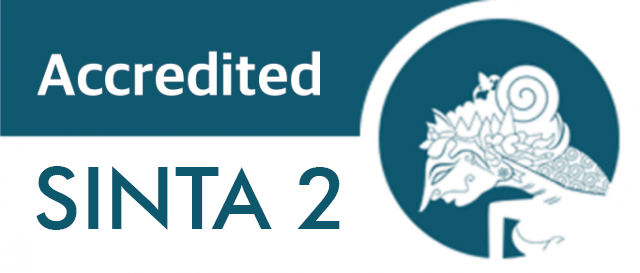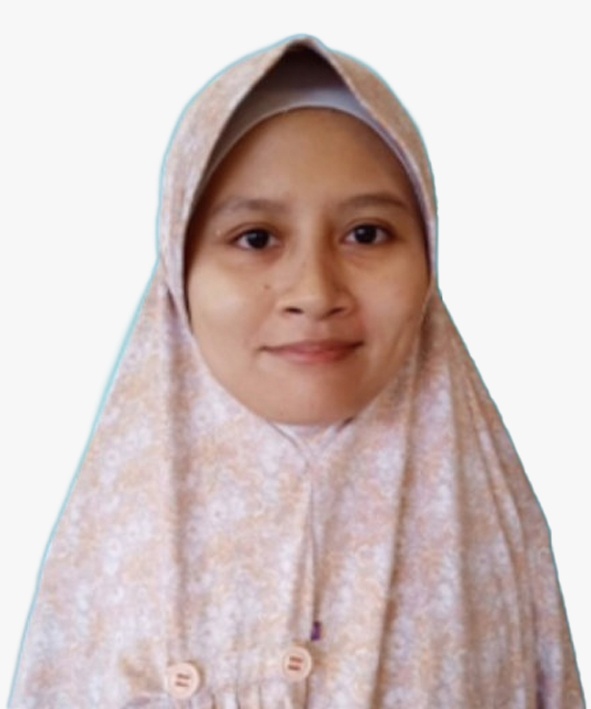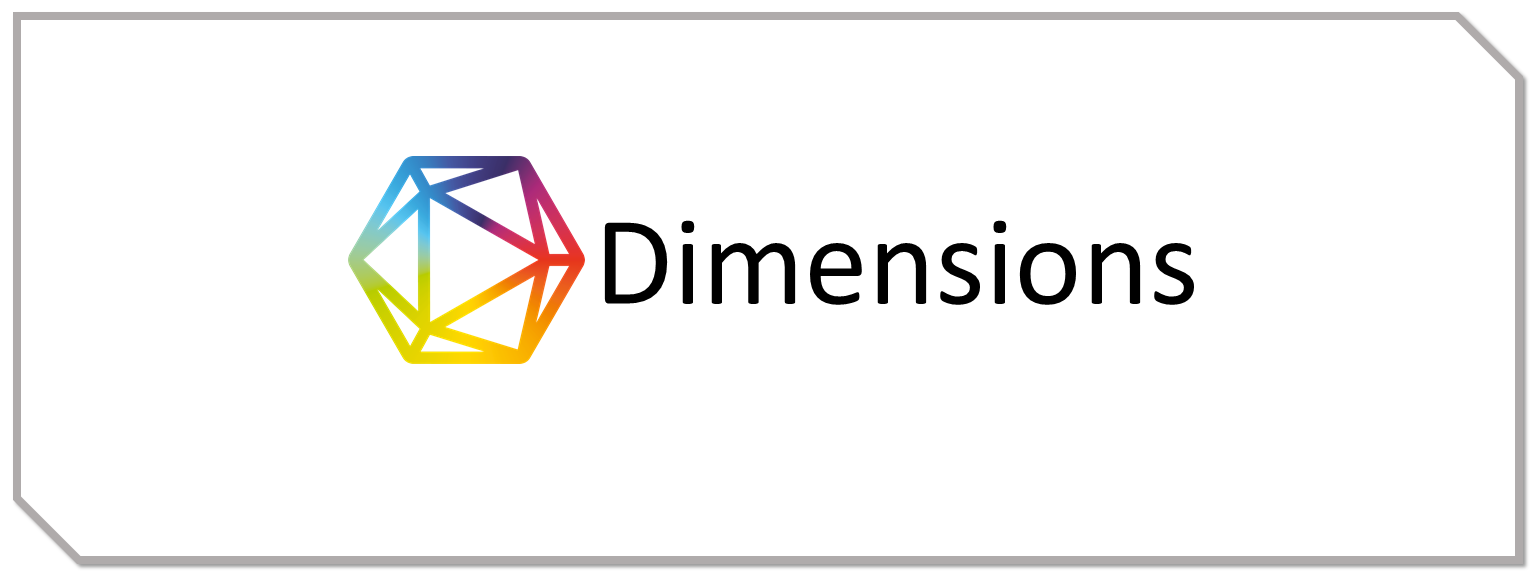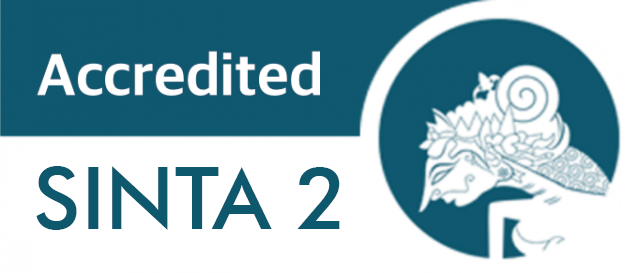Religious-Spirituality Approach to Post-Stroke Depression Patients: An Evidence-Based Case Report
Introduction: Stroke patients can develop a risk of depression due to decreased physiological and psychological functions. Management of post-stroke depression is one of the challenges in the care of stroke patients. A religious/spirituality management approach can be an alternative in the management of post-stroke depression. This evidence-based management is to evaluate management options with a religiosity/spirituality approach to reduce the risk of post-stroke depression. Case: A 54-year-old female patient came with her husband with complaints of changes in feelings and emotions, accompanied by difficulty sleeping and headaches. She felt dissatisfied with her religious worship properly. The patient was diagnosed with organic depression due to stroke. Discussion: Three quantitative studies have shown that a religiosity/spirituality approach in the management of post-stroke patients has the effect of reducing depression in patients through increased efficacy and self-acceptance. Based on three qualitative studies, it shows the effect of the religiosity/spirituality approach as a coping mechanism that can reduce depressive symptoms. The lack of quality of the study makes the religiosity/spirituality approach to reduce depression in the management of post-stroke patients need further study regarding its effectiveness and its effect on the wider population. Conclusion: The religiosity/spirituality approach can reduce depression and is suggested as one of the management options for post-stroke patients.
INTRODUCTION
Post-stroke depression (PSD) is one of the serious complications of stroke that can increase the risk of patient mortality[1]. The prevalence of PSD reaches 30% of the total stroke survivors, with a range between 18-33%, depending on the patient selection, diagnostic criteria used, and length of time (follow-up) after the stroke[2],[3]. In men, post-stroke depressive episodes occur more frequently than in women, although women have a greater risk of stroke[4],[5]. Current evidence strongly indicates an association between stroke severity and PSD, which is frequent and is a complication of stroke that interferes with functional abilities of daily living[3]. Depression following an acute post-stroke event impacts recovery function[6].
Spirituality and religiosity have been found to play important moderating roles in other populations[7]. Spirituality refers to the way individuals express their meaning and purpose with important or sacred things, while religiosity means to individuals or groups adherence to a higher power of faith in forms of beliefs, doctrines, or practices[7],[8]. For example, Dewitte and Dezutter (2021) observed older populations in the Netherlands that meaning in life, which is influenced by spirituality and religiosity, is negatively correlated with depressive symptoms, which in populations with indifference to the meaning of life has higher depressive symptoms[9]. The use of religious values can also be utilized in cognitive behavioral therapy sessions and is known to have better results by providing more relevance in life[10]. However, the use of a spirituality approach and religiosity in the management of PSD is still not widely practiced in clinical settings, so in this case, the aim is to discuss evidence-based management of the management of spirituality and religiosity in PSD patients.
CASE
A 54-year-old female patient came with her husband with complaints of changes in feelings and emotions that were more unstable since multiple strokes, with the first attack occurring 5 years ago and the last attack being 3 months ago. The patient was diagnosed with ischemic stroke since the first stroke. Complaints are accompanied by difficulty sleeping since the last stroke and headaches that extend to the left side of the neck. The patient has received treatment from a neurologist for stroke management, but her mood and emotional complaints have not improved. Based on information from her husband, the patient felt dissatisfied in carrying out her religious worship and was disturbed by her physical condition, which made her unable to worship properly. The patient confirmed that she was not happy with her current ability to worship due to her stroke. Based on information and psychiatric examination, the patient was diagnosed with organic depression due to stroke. After being given treatment in the form of antidepressants and sleep medication, the patient was given an appointment for control 1 week later.
Based on the case, the clinical question is, “Can religiosity and spirituality approaches help the management of patients with post-stroke depression?”
DISCUSSION
A literature search was conducted from August to September 2022 using the electronic search engines PubMed, Google Scholar, EBSCO, and ScienceDirect using the phrases “religiosity approaches in the management of post-stroke depression (PSD),” “spirituality coping management of post-stroke depression (PSD),” and a combination of the keywords “religiosity,” “spirituality,” “post-stroke depression,” and “rehabilitation.”. The search for selected studies focused on the effect of religious and spiritual approaches on post-stroke depression patients. The inclusion criteria in this literature search were quantitative and qualitative studies and studies published in English or Indonesian from 2019-2022. Data retrieval from qualitative studies was carried out to obtain the perspective of stroke patients on the influence of the religiosity-spirituality approach to analyze understanding resilience through the perspective of stroke patients[11]. All relevant studies will be assessed using the Center for Evidence-Based Medicine (CEBM) critical appraisal worksheet tool by the University of Oxford according to the type of study.
We obtained 3 studies related to interventions to support the religiosity/spirituality approach in post-stroke depression patients and 3 qualitative studies on the effect of religious and spiritual approaches to answer our clinical questions. Our literature search is described in . Based on the critical appraisal assessment with the CEBM, only one study met the internal validity for the RCT study, while the findings of the qualitative study were obtained to formulate clinical questions and problems. The results of the critical appraisal of quantitative and qualitative studies are shown inTable 1.andTable 2..
| Author (Year of study) | Country | Type of intervention | Focused approach (Spirituality/Religiosity) | Number of participants | PICO | Randomisation | Similiarity | Equally treated | Intention to treat | Blinding | Main findings |
| Handayani et al (2020) | Indonesia | The SELF-HELP Packages (Smart, Effort, Wellness, Feel, Happy and Power) | Spirituality and Religiosity | 68 patients of ischemic stroke | + | - | + | + | + | - | The intervention did not effect on post-stroke depression significantly after any confounding controlled (OR=0.288, 95% CI 0.073 – 1.135, p=0.075) |
| Dharma et al (2020) | Indonesia | Religious Spiritual and Psycososial Coping Training (RS-PCT) | Religiosity and Spirituality | 56 patients (28 patients in intervention group (24 non hemorrhage and 4 hemorrhage) and 28 patients in control group (23 non hemorrhage and 5 hemorrhage) | + | + | + | + | + | + | In the intervention group, there was a significant (p=0,046 and 0,030) increase in the value of self-acceptance (36,86 (8,484), CI 95%: 33,57-40,15) and efficacy (25,18 (4,137), CI 95%: 23,57-26,78) compared to control group (32,32 (8,092), |
A. de Bekker, M. I. Geerlings, I. E. Uitewaal-Poslawsky, and J. M. de Man-van Ginkel, . “Determinants of the Natural Course of Depressive Symptoms in Stroke Survivors in the Netherlands: The SMART-Medea Study,” J. Stroke Cerebrovasc. Dis., vol. 31, no. 3, p. 106272, Mar. 2022, doi: 10.1016/j.jstrokecerebrovasdis.2021.106272.
G. Pucciarelli et al., “Role of Spirituality on the Association Between Depression and Quality of Life in Stroke Survivor–Care Partner Dyads,” Circ. Cardiovasc. Qual. Outcomes, vol. 13, no. 6, Jun. 2020, doi: 10.1161/CIRCOUTCOMES.119.006129.
G. C. Medeiros, D. Roy, N. Kontos, and S. R. Beach, “Post-stroke depression: A 2020 updated review,” Gen. Hosp. Psychiatry, vol. 66, pp. 70–80, Sep. 2020, doi: 10.1016/j.genhosppsych.2020.06.011.
S. Ilut, A. Stan, A. Blesneag, V. Vacaras, S. Vesa, and L. Fodoreanu, “Factors that influence the severity of post-stroke depression.,” J. Med. Life, vol. 10, no. 3, pp. 167–171, 2017.
K. M. Rexrode, T. E. Madsen, A. Y. X. Yu, C. Carcel, J. H. Lichtman, and E. C. Miller, “The Impact of Sex and Gender on Stroke,” Circ. Res., vol. 130, no. 4, pp. 512–528, Feb. 2022, doi: 10.1161/CIRCRESAHA.121.319915.
E. Zhang and P. Liao, “Brain‐derived neurotrophic factor and post‐stroke depression,” J. Neurosci. Res., vol. 98, no. 3, pp. 537–548, Mar. 2020, doi: 10.1002/jnr.24510.
D. M. Steinhorn, J. Din, and A. Johnson, “Healing, spirituality and integrative medicine,” Ann. Palliat. Med., vol. 6, no. 3, pp. 237–247, Jul. 2017, doi: 10.21037/apm.2017.05.01.
P. Austin, J. Macdonald, and R. MacLeod, “Measuring Spirituality and Religiosity in Clinical Settings: A Scoping Review of Available Instruments,” Religions, vol. 9, no. 3, p. 70, Mar. 2018, doi: 10.3390/rel9030070.
L. Dewitte and J. Dezutter, “Meaning Reflectivity in Later Life: The Relationship Between Reflecting on Meaning in Life, Presence and Search for Meaning, and Depressive Symptoms in Older Adults Over the Age of 75,” Front. Psychol., vol. 12, Oct. 2021, doi: 10.3389/fpsyg.2021.726150.
H. Hassan, S. Lack, P. M. Salkovskis, and G. R. Thew, “Acknowledging religion in cognitive behavioural therapy: The effect on alliance, treatment expectations and credibility in a video‐vignette study,” Br. J. Clin. Psychol., vol. 63, no. 3, pp. 347–361, Sep. 2024, doi: 10.1111/bjc.12464.
H.-Y. Yan and H.-R. Lin, “Resilience in Stroke Patients: A Concept Analysis,” Healthcare, vol. 10, no. 11, p. 2281, Nov. 2022, doi: 10.3390/healthcare10112281.
F. Handayani, S. Setyowati, D. Pudjonarko, and D. R. Sawitri, “The Effect of ‘SELF-HELP Packages’ on Post Stroke Depression among Ischemic Stroke Survivors,” Nurse Media J. Nurs., vol. 10, no. 3, pp. 361–375, Dec. 2020, doi: 10.14710/nmjn.v10i3.31014.
K. K. Dharma, A. Parellangi, and H. Rahayu, “Religious Spiritual and Psycososial Coping Training (RS-PCT) Meningkatkan Penerimaan Diri dan Efikasi Diri pada Pasien Paska Stroke,” J. Keperawatan Silampari, vol. 3, no. 2, pp. 520–533, May 2020, doi: 10.31539/jks.v3i2.1147.
J. Smith, “Self-management strategies employed by stroke survivors in the Western Cape, South Africa,” 2019. [Online]. Available: https://api.semanticscholar.org/CorpusID:195495310
F. F. Mairami and N. Warren, “Stroke recovery in rural Malaysia: the role of the Islamic faith,” SN Soc. Sci., vol. 1, no. 6, p. 137, Jun. 2021, doi: 10.1007/s43545-021-00155-0.
R. Taylor-Piliae, H. Dolan, and A. Yako, “Stroke Survivors’ Personal Efficacy Beliefs and Outcome Expectations of Tai Chi Exercise: A Qualitative Descriptive Study,” Int. J. Environ. Res. Public Health, vol. 18, no. 24, p. 13001, Dec. 2021, doi: 10.3390/ijerph182413001.
M. Khaledian, M. Pishvaei, and Z. K. Baghteyfouni, “Effect of Islamic-based spiritual therapy on self- esteem and mental health of addicts,” 2017, doi: 10.18869/acadpub.jrh.7.2.719.
C. Ozawa et al., “Resilience and spirituality in patients with depression and their family members: A cross-sectional study,” Compr. Psychiatry, vol. 77, pp. 53–59, Aug. 2017, doi: 10.1016/j.comppsych.2017.06.002.
B. P. Mosqueiro, N. S. da Rocha, and M. P. de A. Fleck, “Intrinsic religiosity, resilience, quality of life, and suicide risk in depressed inpatients,” J. Affect. Disord., vol. 179, pp. 128–133, Jul. 2015, doi: 10.1016/j.jad.2015.03.022.
D. De Berardis et al., “Religious Coping, Hopelessness, and Suicide Ideation in Subjects with First-Episode Major Depression: An Exploratory Study in the Real World Clinical Practice,” Brain Sci., vol. 10, no. 12, p. 912, Nov. 2020, doi: 10.3390/brainsci10120912.
C. B. How, K. E. Ming, and C. Y. Chin, “Does religious affiliation influence glycaemic control in primary care patients with type 2 diabetes mellitus?,” Ment. Health Fam. Med., vol. 8, no. 1, pp. 21–28, Mar. 2011.
Y. Qiu, S. Fan, Q. Fu, M. Yang, and L. Zhu, “Fatalism as a Mediator of the Association Between Family Resilience and Self-Management Among Patients with Chronic Wounds in China,” Patient Prefer. Adherence, vol. Volume 18, pp. 53–67, Jan. 2024, doi: 10.2147/PPA.S446219.
D. Y. Kamath et al., “A qualitative, grounded theory exploration of the determinants of self-care behavior among Indian patients with a lived experience of chronic heart failure,” PLoS One, vol. 16, no. 1, p. e0245659, Jan. 2021, doi: 10.1371/journal.pone.0245659.
A. Miles, S. Rainbow, and C. von Wagner, “Cancer Fatalism and Poor Self-Rated Health Mediate the Association between Socioeconomic Status and Uptake of Colorectal Cancer Screening in England,” Cancer Epidemiol. Biomarkers Prev., vol. 20, no. 10, pp. 2132–2140, Oct. 2011, doi: 10.1158/1055-9965.EPI-11-0453.
A. B. Bakan, G. Aslan, and M. Yıldız, “Determination of Breast Cancer Fatalism in Women and the Investigation of the Relationship Between Women’s Cervical Cancer and Pap Smear Test Health Beliefs with Religious Orientation and Fatalism,” J. Relig. Health, vol. 60, no. 3, pp. 1856–1876, Jun. 2021, doi: 10.1007/s10943-020-01108-2.
A. Thapa et al., “Mediation by Fatalism of the Association Between Symptom Burden and Self-care Management in Patients With Heart Failure,” J. Cardiovasc. Nurs., vol. 39, no. 3, pp. 229–236, May 2024, doi: 10.1097/JCN.0000000000001053.
D. M. Oosterveer, M. J. H. Wermer, G. Volker, and T. P. M. V. Vlieland, “Are There Differences in Long-Term Functioning and Recovery Between Hemorrhagic and Ischemic Stroke Patients Receiving Rehabilitation?,” J. Stroke Cerebrovasc. Dis., vol. 31, no. 3, p. 106294, Mar. 2022, doi: 10.1016/j.jstrokecerebrovasdis.2021.106294.
E. Salvadori et al., “Comparison between Ischemic and Hemorrhagic Strokes in Functional Outcome at Discharge from an Intensive Rehabilitation Hospital,” Diagnostics, vol. 11, no. 1, p. 38, Dec. 2020, doi: 10.3390/diagnostics11010038.
Copyright (c) 2025 Sausan, Muhammad Luthfi Adnan, Baiq Rohaslia Rhadiana

This work is licensed under a Creative Commons Attribution-ShareAlike 4.0 International License.
1. Copyright of this journal is possession of the Author, by the knowledge of the Editorial Board and Journal Manager, while the moral right of the publication belongs to the author.
2. The journal allows the author(s) to retain publishing rights without restrictions.
3. The articles are published under a Creative Commons Attribution Share-Alike (CC BY-SA) license. Many research funding bodies prefer the CC BY-SA license because it allows for maximum dissemination and re-use of open access materials. Users are free to share (copy, distribute, and transmit) and remix (adapt) the contribution under this license, including for commercial purposes, as long as they attribute the contribution in the manner specified by the author or licensor.




























